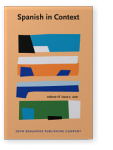Vol. 18:2 (2021) ► pp.161–191
Polylanguaging and bivalency in the Ecuadorian linguistic landscape
An analysis of public signs in Azogues, Ecuador
This study analyzes the linguistic landscape (LL) of Azogues, Ecuador, by analyzing 171 photographs of business signs, taken during the summer of 2017. It analyzes cases of language mixing from a polylanguaging perspective (Jørgensen et al. 2011) and applies the concept of bivalency (Woolard 1999) to understand how linguistic features are used on signs in the LL to index membership in multiple groups and to construct multiple identities through the use of Spanish and English. It investigates the use of bivalency in lexical items, orthography and other linguistic features. This study analyzes the use of English as an outcome of globalization and examines the use of bivalency as a strategy to index global identity when access to English is limited.
Article outline
- 1.Introduction
- 2.Polylanguaging
- 2.1Polylanguaging and globalization
- 2.2Bivalency and polylanguaging
- 2.3Polylanguaging, code switching, and borrowing
- 2.4“Global” English
- 2.5English in Latin America
- 3.Methodology
- 4.Findings
- 4.1Bivalent orthography
- 4.2Bivalent words
- 4.3Use of other languages
- 4.4A look at non-bivalent signs
- 5.Discussion and conclusions
- Notes
-
References
